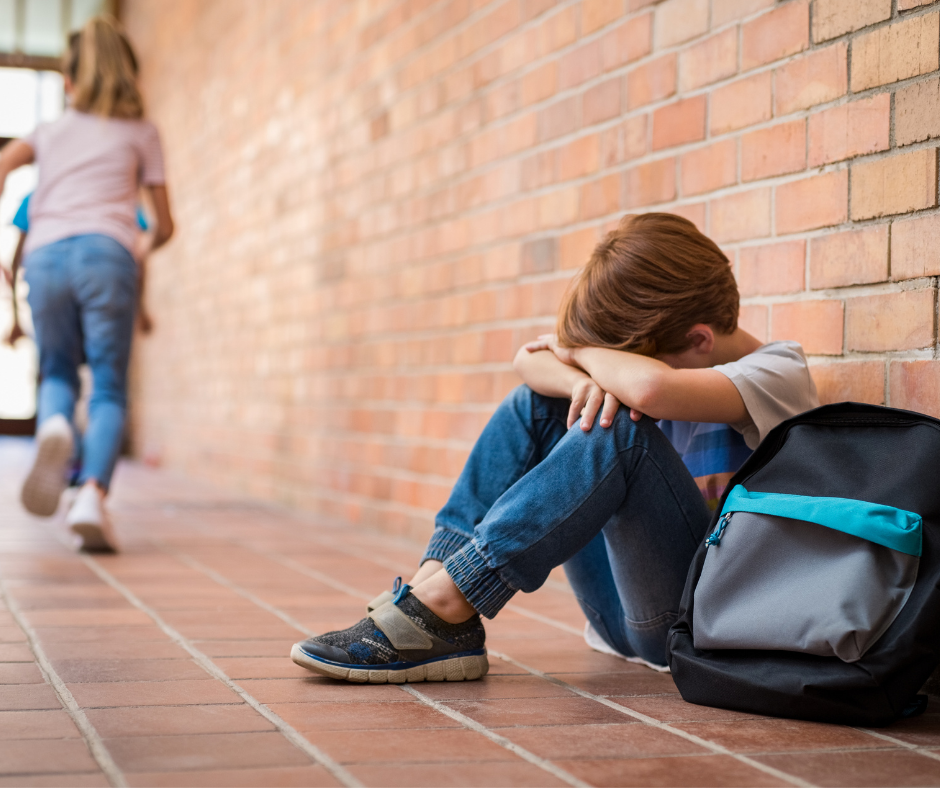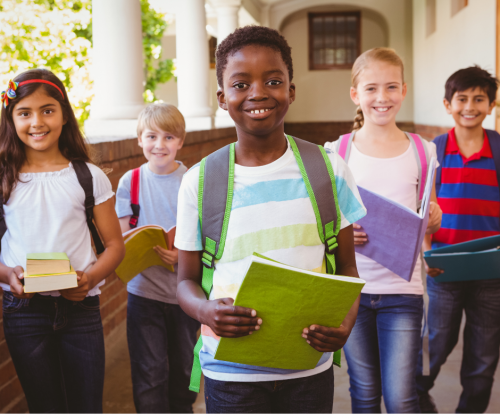 Kids who are bullied may feel depressed, anxious, sad and lonely. They may have changes in sleep patterns, experience academic decline, complain about their health, participate less in school activities or skip school altogether. All who are impacted share the common goal of putting an immediate end to mistreatment and making children feel safe and accepted. What is the best way to get bullying under control? We ALL want to know!
Kids who are bullied may feel depressed, anxious, sad and lonely. They may have changes in sleep patterns, experience academic decline, complain about their health, participate less in school activities or skip school altogether. All who are impacted share the common goal of putting an immediate end to mistreatment and making children feel safe and accepted. What is the best way to get bullying under control? We ALL want to know!
Let’s look at the roles children play in a bullying event. They can either be:
- The child who was bullied or
- The child who bullied or
- The bystander (or witness)
(We avoid labeling kids as “victim” or “bully” because it implies permanence and suggests the behavior cannot change. It also disregards factors that contribute to the behavior, such as school climate or peer influence, as well as fails to recognize multiple roles a child may play.)
We know that nearly 80% of children have played at least one of these roles at some point in their lives. When research examines the dynamics of bullying episodes, they consider all three roles in planning for intervention, along with environment and adult responsibility.
 What doesn’t work? Researchers who have explored bullying dynamics and resolutions over decades have come to notice common mistakes and offer the following advice:
What doesn’t work? Researchers who have explored bullying dynamics and resolutions over decades have come to notice common mistakes and offer the following advice:
- Do not ignore bullying. Don’t assume kids can work it out on their own.
- Don’t try to immediately sort out facts.
- Don’t force other kids to publicly report what happened (this applies to bystanders, too).
- Don’t question the kids involved when other children are present.
- Do not talk to the kids involved together; separate them.
- Don’t make kids apologize on the spot.
What helps?
According to Menesini and Salmivalli (2017) who evaluated over 40 years of research, whole-school programs that are intensive and long-lasting are the most effective intervention methods. Pro-social schoolwide programs encourage behaviors that foster social acceptance and friendships; they can reduce bullying by up to 23% (or maybe more).
Changing the bullying culture at a school is a thorny task to undertake. Successful programs typically include the following:
- Parent training programs or meetings,
- Clearly defined disciplinary frameworks, and
- Mobilization of bystanders
Mobilization of bystanders is where parents can really make a difference. As it turns out, KIDS are the most powerful individuals when it comes to stomping out bullying. When bystanders intervene, bullying stops within 10 seconds 57% of the time. You can help your child change the climate in their school by discussing ways he/she can safely intervene in a bullying event, such as:
- Question the bullying behavior or change the subject to help shift focus.
- Use humor to redirect the conversation.
- Walk with a person who is the target of bullying to help avoid potential bullying interactions.
- Reach out privately to let a person who was bullied know that you don’t agree with it and that you care. (It can really make a difference.)
- Quickly let a nearby adult know that someone is being bullied, especially if there is physical confrontation.
School administrators have separate responsibilities that are complex and plentiful when it comes to bullying prevention and intervention, such as creating policies and incorporating them into the school culture, training school staff, establishing an easy-to-follow reporting system and tracking patterns over time.
Parents have the distinct role of helping their own children manage bullying. Initiating open discussions about what they have seen, heard or experienced is a great first step. Maintaining open lines of communication and checking in with your child lets them know they do not need to feel ashamed if it happens to them. Empower kids by letting them know there is a clear plan of action to take and you will be there with them. Help them understand that KIDS have the greatest power in putting a stop to bullying. Not teachers. Not government officials. Not administrators. Kids are the key.
 Reminder: Kids should NEVER get involved in a physical altercation. They can help the situation by finding the closest adult and allowing them to take control.
Reminder: Kids should NEVER get involved in a physical altercation. They can help the situation by finding the closest adult and allowing them to take control.
Blogs are short! There is so much more to learn about bullying. For more information, check out www.stopbullying.gov.



















